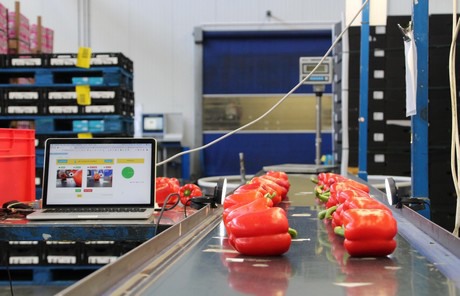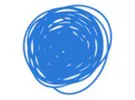The bell peppers appear one after the other in front of the lens. Almost immediately, the screen shows which meet the required standards and which do not. The more deviations photographed, the smarter this quality control system becomes; and the better it can distinguish between the different quality levels.
The Dutch start-up, Mythronics developed this system. The system uses deep learning technology. It can recognize 2,600 bell peppers per hour. The goal is for this system to become part of the sorting process. It can gradually replace humans there.
Quicker inspection
Soheil Jahanshahi started developing this autonomous AI inspection system in March 2018. Now, more than a year later, it is being thoroughly tested by ABC Logistics. This company is a fruit and vegetable distribution center in the Netherlands. “It is difficult to control all the fruit and vegetables that come in," he says
"Quite a lot of product moves along the conveyor belt per hour. The employees are mostly temporary workers. They have to be properly trained to make the correct choices when carrying out the checks. Staff turnover means new people have to be trained constantly."
"That takes time and costs the sector a lot of money. A system that can inspect products based on AI can save FTEs. It can also increase the rate of inspection," Soheil explains.
Stable assessment
"People's choices are prone to error and differ from person to person. In contrast, this system gives a continual, stable assessment. This will ensure fewer to no defective products will be sent to clients. In the end, this saves FTEs and ensures a more stable, higher rate of inspection. There will also be lower defect costs, and it will create a better image for the company."
 Soheil Jahanshahi and Steven Timmers.
Soheil Jahanshahi and Steven Timmers.
Wide range of application
Bell peppers, cucumbers, but also flowers - according to Soheil, the possibilities are endless. "We can check for deviating forms, color differences, and sizes. But, perhaps, in the future we can also look at the inside of a product," he says.
"We've already run tests during a tomato harvest. We looked at nose rot and insects bites. It is all about how you train the system. Its versatility makes it widely applicable. Not only within the horticultural, fruit, and vegetable sector but also out there."
Any quality profile
Steven Timmers has noticed a lot of enthusiasm about AI's potential within the horticultural, fruit, and vegetable sector. He later partnered up with Mythronics. “Everyone is saying it offers opportunities to help advance the sector. How that should be done is not always clear. We can help with that."
"The smarts are in the software. The software contains all the tools to create any kind of quality profile. The client determines this profile. The system collects knowledge through deep learning. This data is safely protected. It is easy to use the software. The system is also reasonably affordable to purchase. This means it is not only reserved for large growers," Steven says.
The data can also be used to perform analysis, for example, of future defects in products. This is besides utilizing the information for quality control.

Training and correcting
Training is also not as difficult as it sounds, says Steven. “Training can be done by the company itself. You do not have to be an engineer to do it. How long the training takes depends on various factors. You can start using the system within just a few days."
"The longer it is used, the more reliable it becomes and the fewer mistakes the system makes. In most cases, training takes a month. However, if you put some effort into it, the system can already run smoothly during the inspection process within two weeks."
"If the system is in doubt, it sends a message to the quality manager. The system is self-correcting. It will correct the mistakes it makes in the early days. In this way, inspections become more precise," concludes Steven.
For more information:
Mythronics
12 Molengraaffsingel
2629 JD Delft, NL
info@mythronics.com
www.mythronics.com
